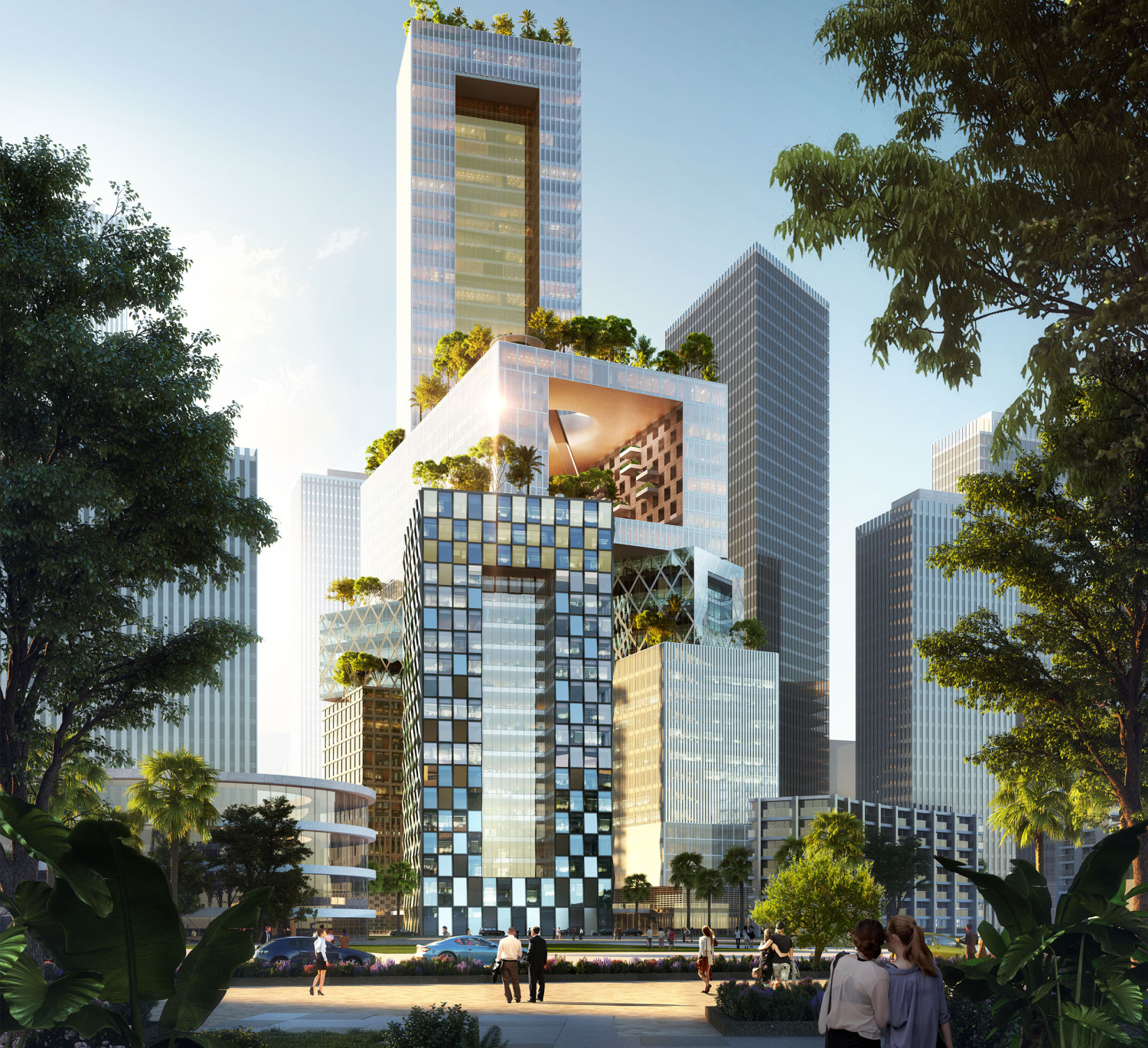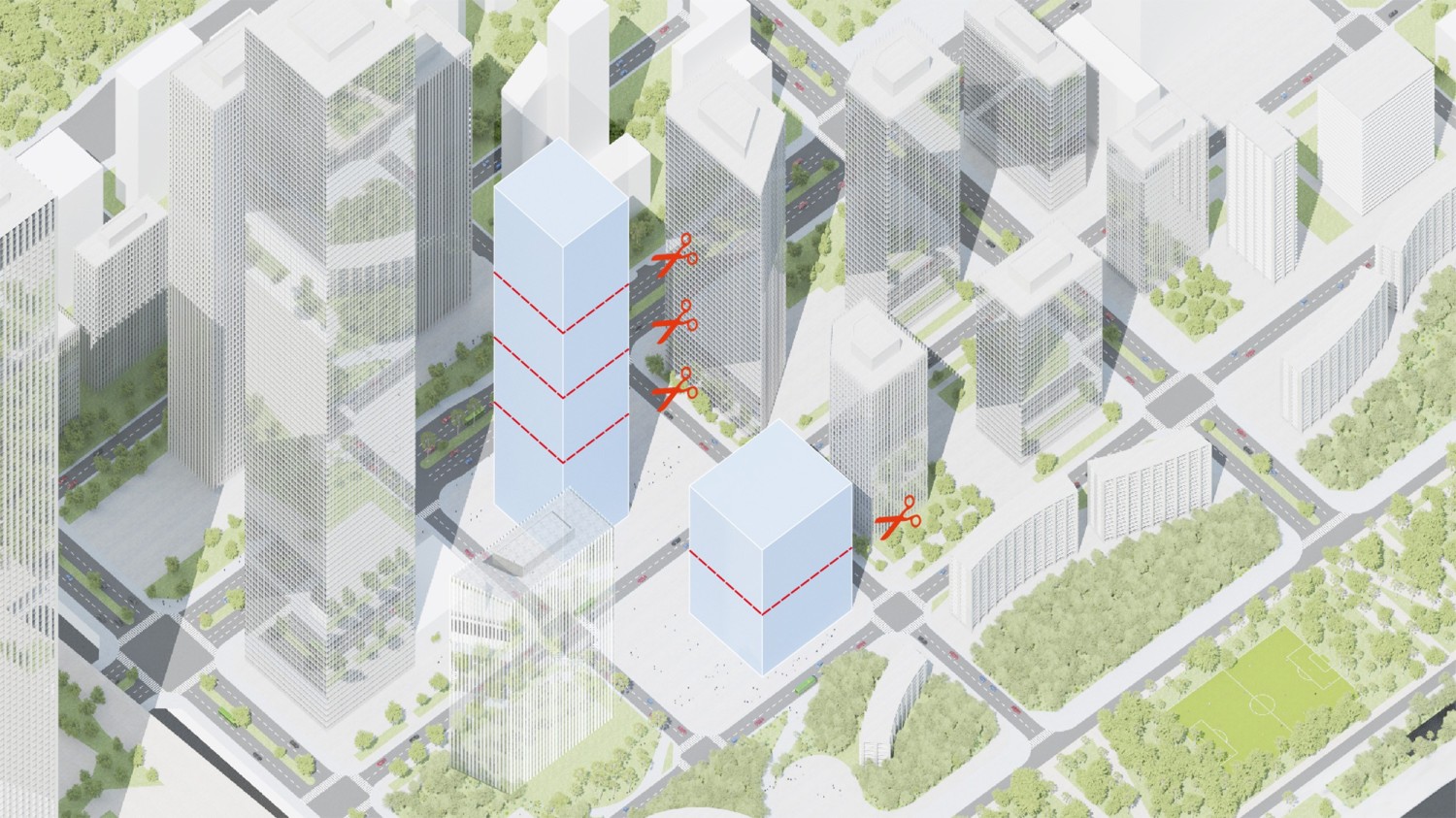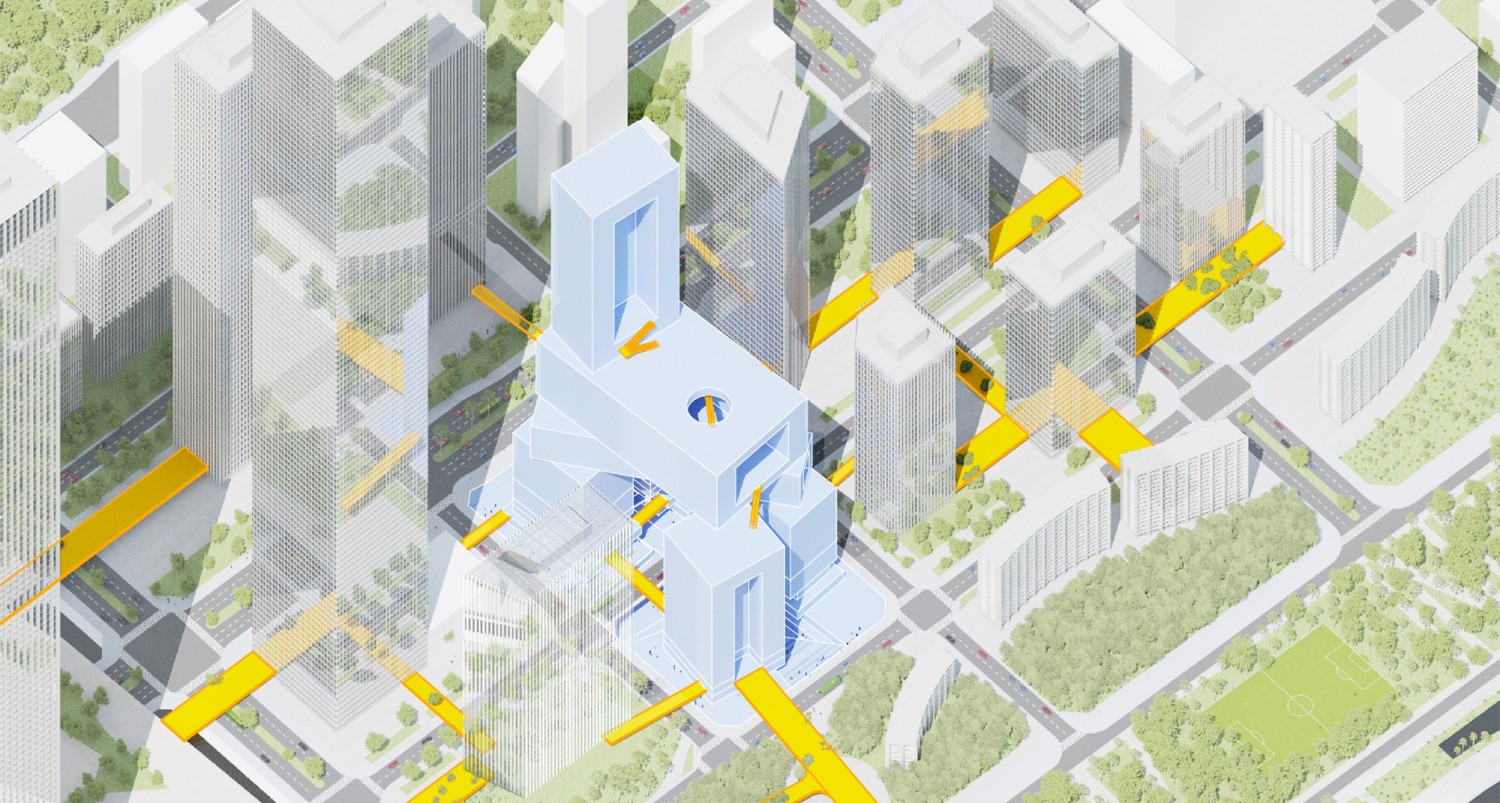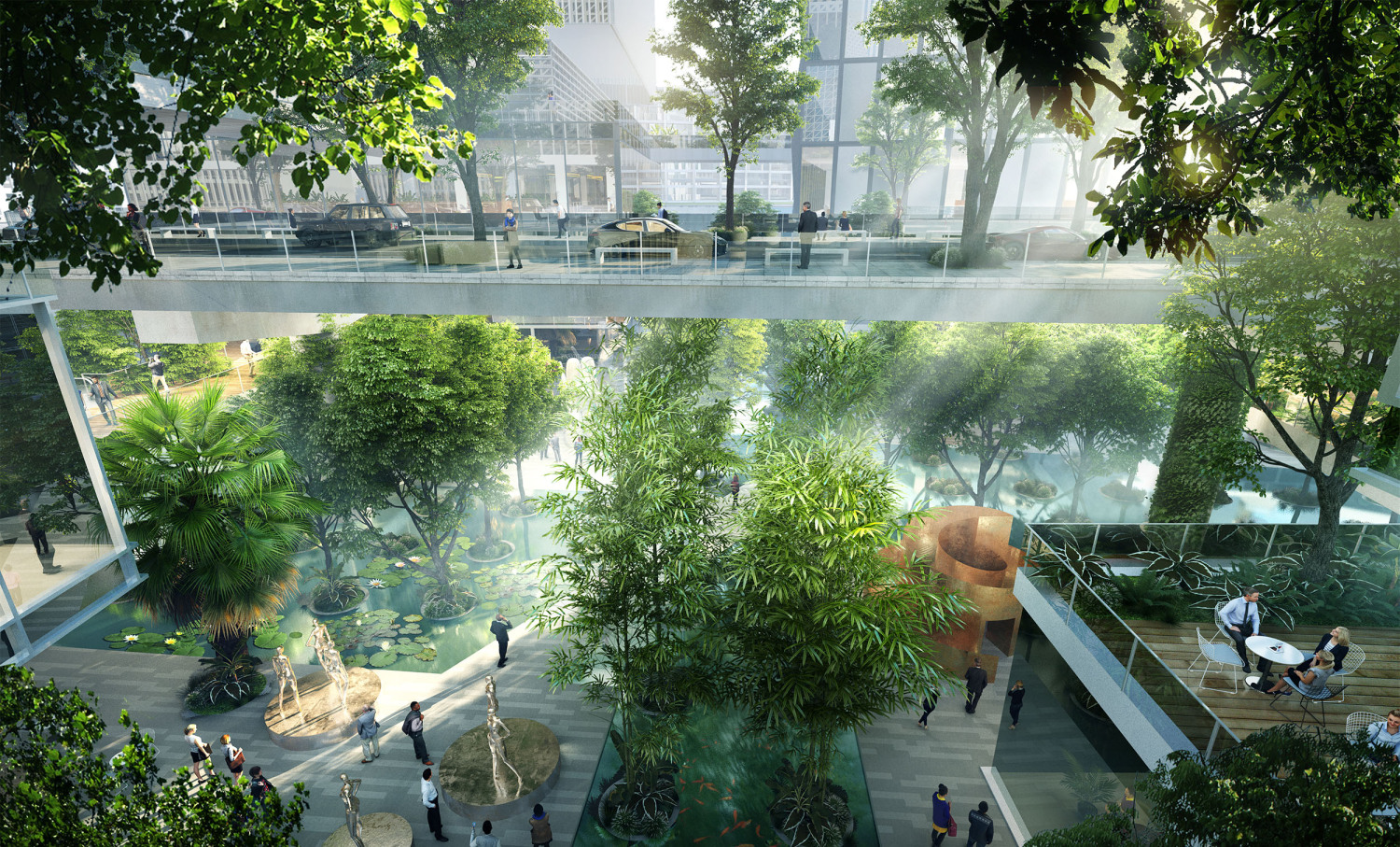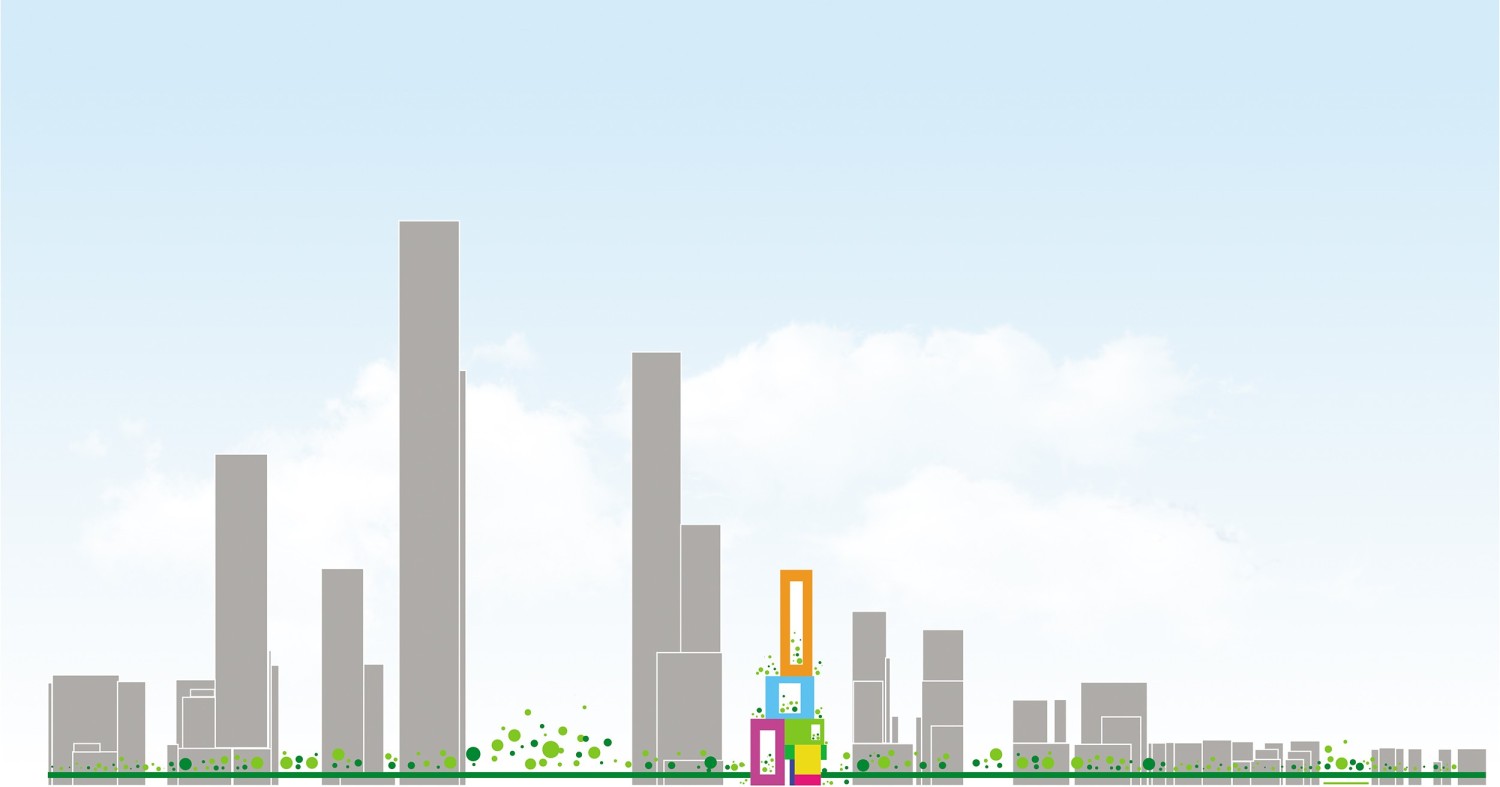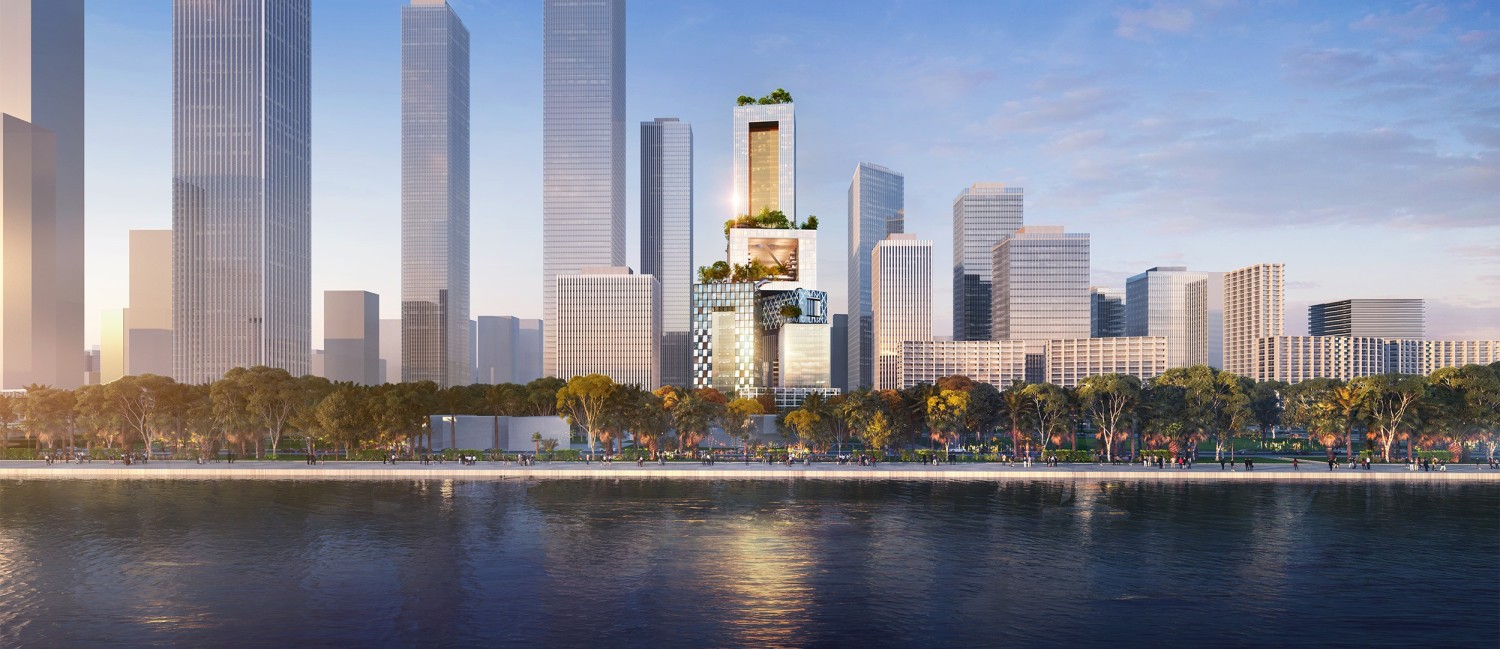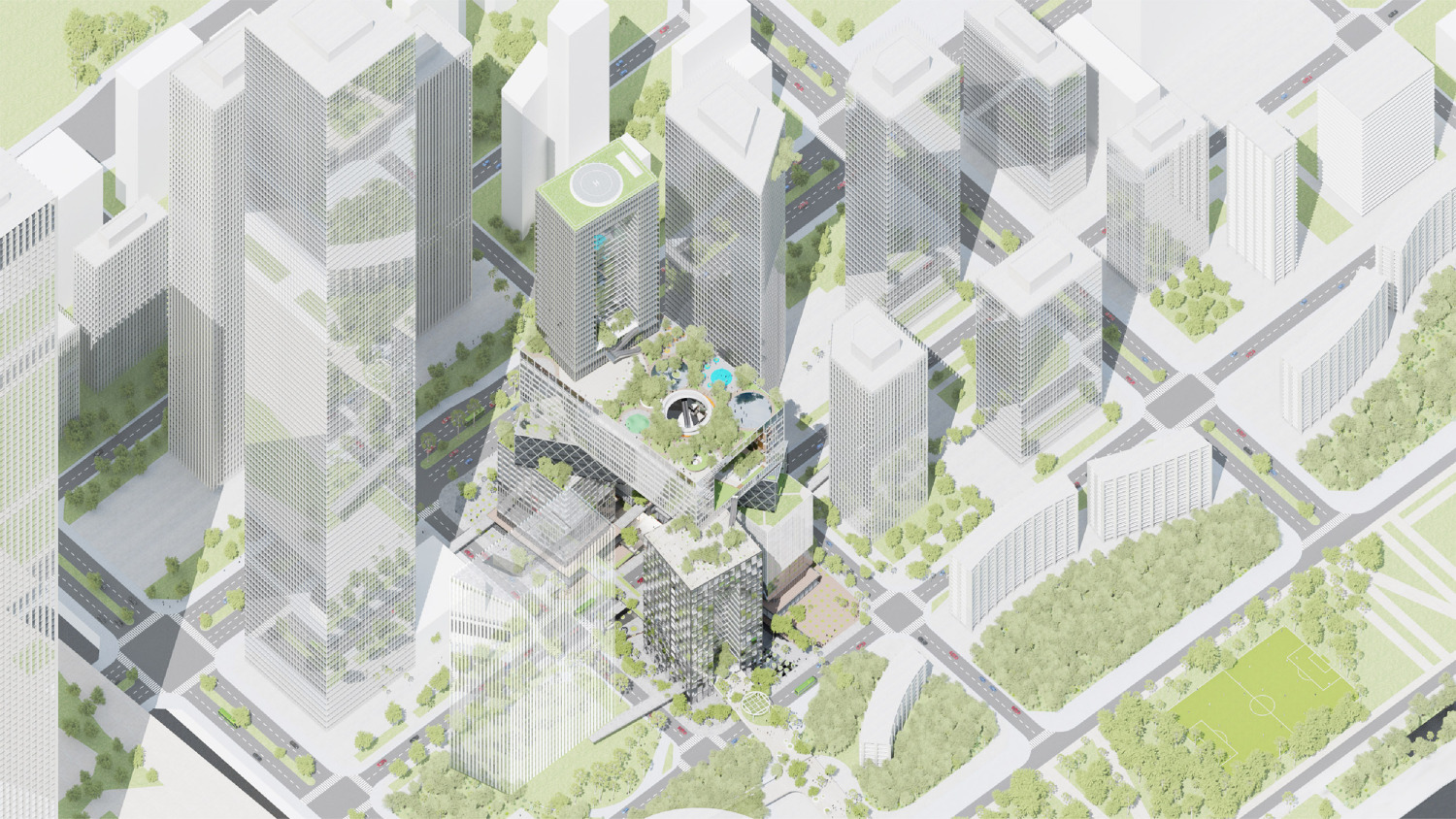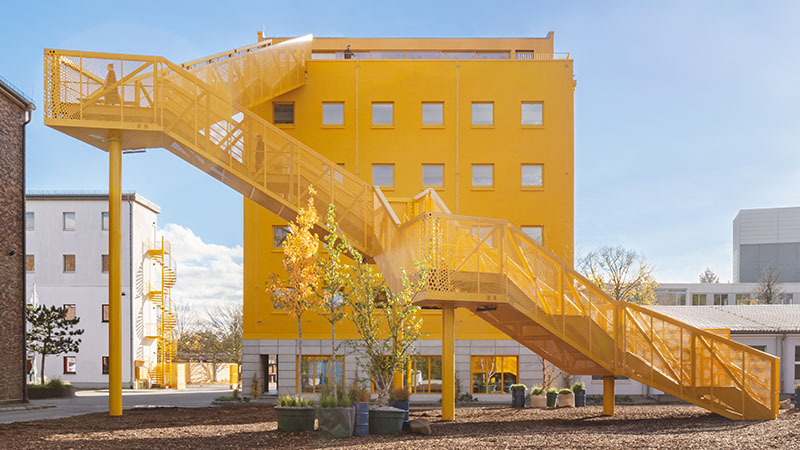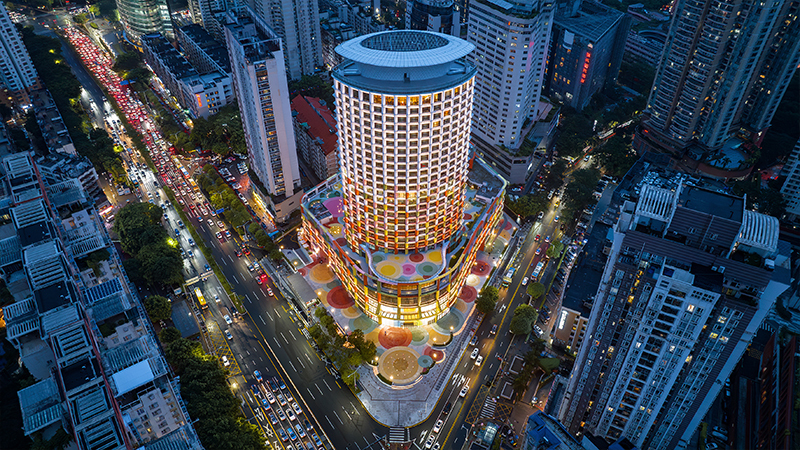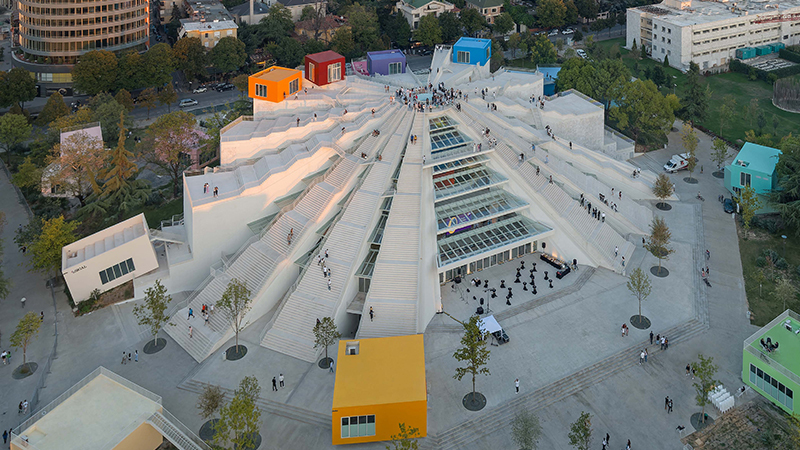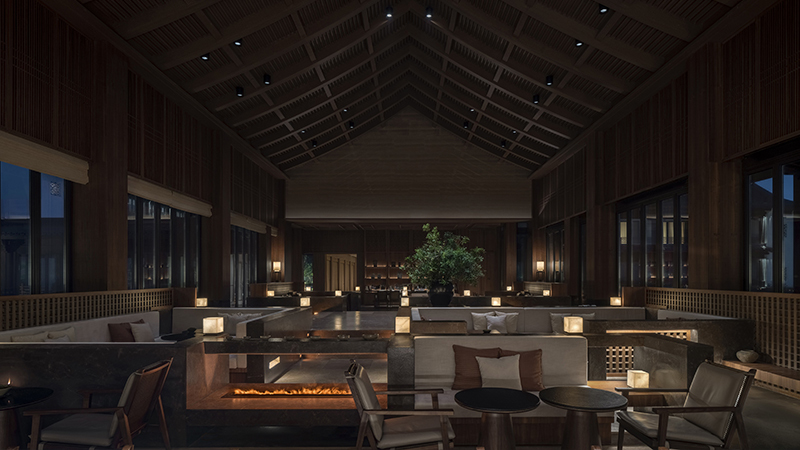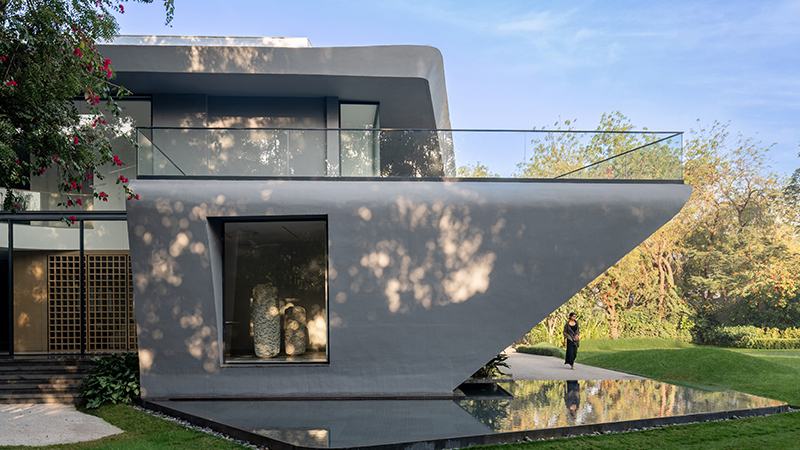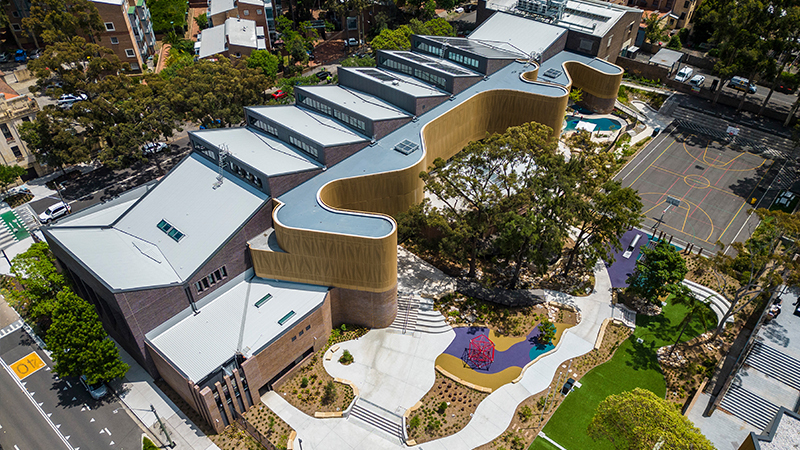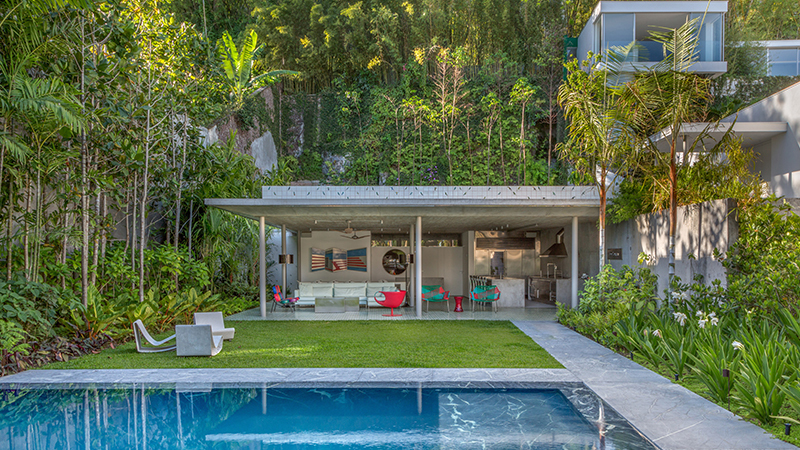新一代的摩天大楼:MVRDV中标深圳万科总部竞标,将重新定义摩天大楼
The Next Generation of Skyscrapers: MVRDV Redefines the Tower with Vanke Headquarters Competition Win in Shenzhen
MVRDV赢得了中国房地产开发商万科在深圳设计新总部大楼的竞赛。这座250米高的万科总部大楼——MVRDV非正式地称其为“万科3D城”——将于2019年年中开始建设。8个相互连接的办公、住房和文化建筑体量组共同形成的“三维城市”概念是MVRDV进行的一系列研究项目的成果,这是一个雄心勃勃的计划,可能会打开下一代摩天大楼的先河。
MVRDV has won the competition organized by Chinese real estate developer Vanke to design their new headquarters building in Shenzhen. The 250-metre-tall Vanke Headquarter Tower – unofficially called Vanke 3D City by MVRDV – is due to start construction in mid-2019, and comprises a cluster of eight interlinked blocks of offices, housing and culture, rising from four separate bases to a single crowning tower. It is an ambitious proposal that heralds the next generation of skyscraper design, following the concept of the “three-dimensional city”—an idea that is the culmination of a series of research projects conducted by MVRDV.
不仅是为该公司自己的员工提供办公空间,而且要形成一个充满活力的多功能城市空间,包括可出租的办公室、零售空间、餐厅、酒店和丰富的户外空间。项目场地被一条道路分隔成两个地块,针对这一不利条件,MVRDV提出了一个新的概念:由八个体量组成的建筑群将这两个地块连接起来,同时也将道路连接起来。这是一个独特的、具有前瞻性的设计概念,因此得到了深圳市政府的支持。
The ambition for Vanke Group’s headquarters building in Shenzhen was not only to provide office space for the real estate company’s own staff, but to form a vibrant mixed-use city block containing leasable offices, retail space, a restaurant, a hotel, and plentiful outdoor spaces. This program was proposed to occupy two lots separated by a road. In response to this condition, MVRDV proposed a stack of eight blocks that connects these two plots and bridges the road – a unique and forward thinking design feature which has received support from the city government – to create a single 250-metre-tall building with a total of 167,000 square meters of floor space.
▼马路两边的体量裁剪成小块
▼连接起来形成一个整体
▼连接城市街道,与城市发生联系
组成建筑的八个体量旨在平衡建筑的多样性和凝聚力,每一个体量都将进行不同的立面处理。每一块都对应着一个受万科核心价值观启发的关键词:“健康”、“能量”、“开放”、“团队”、“绿色”、“自然”、“未来”和“创意”。其中四个体量将在连续的立面上打开一个或多个“缺口”,这个“缺口”将贯穿整个体量,创造一个“通向世界的窗户”,里面有中庭、公园和广场,这些半公共空间与每个体量裸露的屋顶上的绿色空间相结合,创造了丰富的休闲空间。
The eight blocks that make up Vanke 3D City are designed to strike a balance between architectural diversity and cohesiveness, with each displaying a different façade treatment. Each block corresponds to a keyword inspired by the core values of Vanke: ‘health’, ‘energy’, ‘open’, ‘team’, ‘green’, ‘nature’, ‘future’, and ‘creative’. Four of the blocks also have either an indent on one façade or a hole that punctures the entire depth of the block, creating ‘windows to the world’ that house atriums, parks, and plazas. These semi-public spaces combine with green spaces on the exposed roofs of each block to create a rich network of recreational areas.
▼打开“缺口”,创造灰空间
▼项目效果图
建筑的地基部分,将是一个下沉的、多层次的绿色公共空间,从地下二层一直延伸到地上一层,包括贯穿基地的道路。这个广场和人行道的网络提供了一个阴凉、通风良好的空间,为深圳的热带气候提供了一个喘息的空间。它每天24小时开放,是进入商业和餐厅层的入口,地上人行道也能延伸到邻近的开发项目,建筑创造的步行系统能够扩展到连接整个区域的所有建筑。
At the base of Vanke 3D City is a sunken, multi-level green public space, which extends from the second level below ground to the first level above, incorporating the road that cuts through the site. This network of plazas and walkways offers a shaded, well-ventilated space that provides a respite from the tropical climate of Shenzhen. Open 24 hours a day, it will offer access to the commercial and restaurant levels in the base of the four corner blocks, inverting the plinth typically incorporated into tower designs. The above-ground walkways are also designed to be extended into the neighbouring developments, in the hope that the pedestrian realm created at Vanke 3D City can spread to connect buildings throughout the district.
最核心的摩天大厦,大胆的设计与该方案可持续性的愿景相匹配。除了由簇状形成的许多绿色屋顶外,大厦底部的绿色公园与深圳的“海绵城市”计划相一致,该计划鼓励多孔景观,以防止洪水,减少城市对生态系统的影响。此外,设计还包括了水收集和循环利用系统,虽然每个街区都有不同的立面设计,但都使用了高性能的水循环立面。
The ambition to design the skyscraper of the future is matched by the proposal’s collection of sustainability features. In addition to the many green roofs formed by the tower’s cluster shape, the green park at the tower’s base aligns with Shenzhen’s ‘sponge city’ program, which encourages porous landscapes to prevent flooding and reduce the city’s impact on ecosystems. In addition, the design includes systems for water collection and recycling, and while each block features a different façade design, all use high-performance façades.
“万科3D城可以说是一种新型的摩天大楼。”MVRDV的主要和联合创始人Winy Maas说:“通过将最初提出的两个独立地块堆叠起来,两个独立的万科集团总部大楼就变成了一个万科城市。”“他们把平凡变成非凡。”Maas补充道:“通过开放建筑,一系列大尺度的公共空间将会被创造出来,在那儿可以俯瞰海湾和城市。广场、花园和大厅由一系列楼梯和电梯连接起来,将许多街区连接成一个远离地面的连续的城市结构,这是一个真正的三维城市。”
Maas adds: “By opening the buildings, a series of giant collective halls are created with a view over the bay and to the world. The plazas, gardens, and halls are connected by a series of stairs and elevators, linking the many blocks into a continuous urban fabric high off the ground—a true threedimensional city.” “Vanke 3D City can be seen as a new type of skyscraper. By stacking the required programmatic entities, initially proposed for two separate plots, on top of each other, the two individual Vanke Group Headquarter buildings are turned into a Vanke City”, says Winy Maas, principal and cofounder of MVRDV. “They turn the ordinary into the extraordinary.”
MVRDV正在与ARUP合作,该项目的准备工作已经开始,预计将于2019年夏天开始建设。
MVRDV is collaborating with engineers Arup. Preparation work on the site is already underway, with construction expected to begin in the summer of 2019.
设计单位:MVRDV
项目名称:万科3D城
地点:深圳,中国
中标时间:2018
委托方:中国万科股份有限公司
规模:总面积167000 m²;地面153000 m²(111350 m²办公室;20000 m²酒店;10000 m²商业;7650 m²文化;4000 m²餐厅)。
负责人:Winy Maas
合作伙伴:Wenchian Shi
指导人:Marta Pozo
设计团队:Gustavo van Staveren with Dong Min Lee, Jiani You, Chi Zhang, Marc Coma, Sen Yang, Matiss Groskaufmanis, Peter Chang, Cai Zheli和Echo Zhai
项目协调人:Jammy Zhu Images:©ATCHAIN
版权所有:MVRDV 2018 - (Winy Maas, Jacob van Rijs, Nathalie de Vries)
施工:ARUP - Andrew Luong, Waikong Lam, Arnon Dienn
Project Name: Vanke 3D City
Location: Shenzhen, China
Year: 2018
Client: China Vanke Co., Ltd.
Size and Programme: Total GFA 167,000 m²; above ground 153,000 m² (111,350 m² Office; 20,000 m² Hotel; 10,000 m² Commercial; 7,650 m² Culture; 4,000 m² Restaurant).
Architect: MVRDV
Principal in charge: Winy Maas
Partner: Wenchian Shi
Director Asia: Marta Pozo
Design Team: Gustavo van Staveren with Dong Min Lee, Jiani You, Chi Zhang, Marc Coma, Sen Yang, Matiss Groskaufmanis, Peter Chang, Cai Zheli and Echo Zhai
Project coordinator: Jammy Zhu Images: © ATCHAIN Copyright: MVRDV 2018 – (Winy Maas, Jacob van Rijs, Nathalie de Vries)
Partners
Engineering: ARUP – Andrew Luong, Waikong Lam, Arnon Dienn
更新日期:2019-11-01 17:12:18
非常感谢 MVRDV 带来的精彩项目, 查阅更多Appreciations towards MVRDV for sharing wonderful work on hhlloo. Click to see more works!

